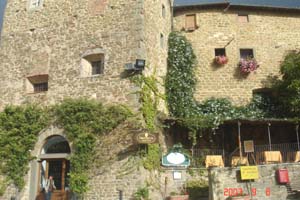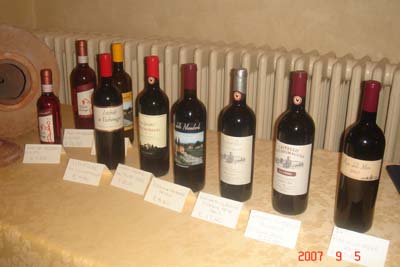 |
| Castello di Volpaia, a 12th century village, restaurant and the Volpaia wine estate of Giovanna Stianti |
For a wine to be labelled a Chianti Classico, other important production requirements have to be met too. A new vineyard may only begin production four years after planting. Compare this with India where sometimes the second crop goes into the bottle and the wineries claim excellent quality!
It also reminded me of my meeting with Filippo, son of legendry Livio Felluga in Friuli a couple of months ago. Traversing through their vineyard, he told me they let the fruit drop off for at least 4-5 years while planting new vines. Do they sell these grapes during this growing period? Negative, was the reply. 'Our business is making quality wine. We are not in the grape business and won't waste our time selling grapes!' he had exclaimed.
The viticulture world had started appreciating the low yield- better wine equation, at least theoretically. So the yields have been limited to 3.34 tons an acre . Output per vine is also limited to 3 kilos, though most quality producers are increasing the density of vines with lower fruit weight per vine to minimise green harvest and get proper concentration.
To ensure a better balanced wine , the release for consumption is authorised only after October 1 of the year following the harvest. For the Riserva, minimum maturation of 24 months in wood, including at least three months in the bottle ageing is mandatory.
In addition to the alcohol level already indicated, Chianti Classico wine must have some predefined characteristics of colour, aromas, flavour, sugar (must be dry at less than 4 gms/lt. sugar), min. extraction and total acidity.
 |
| Locate Chianti Classico in the Wines of Castello Vicchiomaggio (Hint: think pink, round sticker with black rooster) |
The famous Black Rooster has become the Chianti Classico emblem since 2005, irrespective of whether the producer is a member of the all powerful Chianti Classico Wine Consortium or not, although the 612 members represent most of the growers and producers in the appellation-Antinori is the most notable exception.
So what makes the Chianti Classico special? Characteristics of the soil in which it grows, and bouquet which evolves according to the terrain, is one reason. Sandstone is responsible for the wine's flowery bouquet; calcareous soils produce scents of wild berries. Volcanic soils yield fresh aromas of tobacco.
But a perfume of violets, which is a characteristic and specific element of Chianti Classico, is always present no matter where the vines grow. Wines are more complex, concentrated and generally longer maturing.
The passion with which the producers have taken to the new technology and improved wine making techniques by visiting Bordeaux, Burgundy and even US, speaks in the glass.
Page 1 2 3 4 |